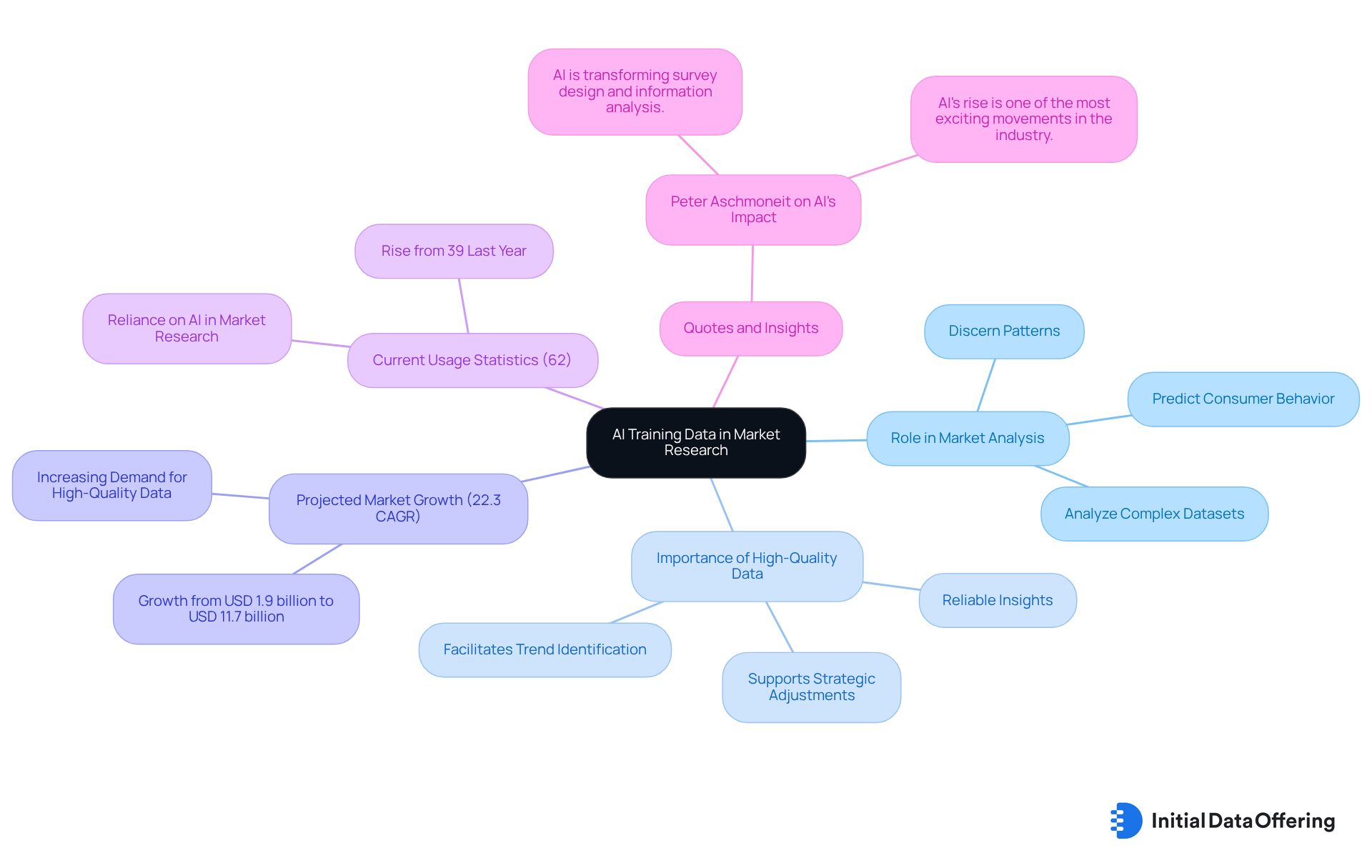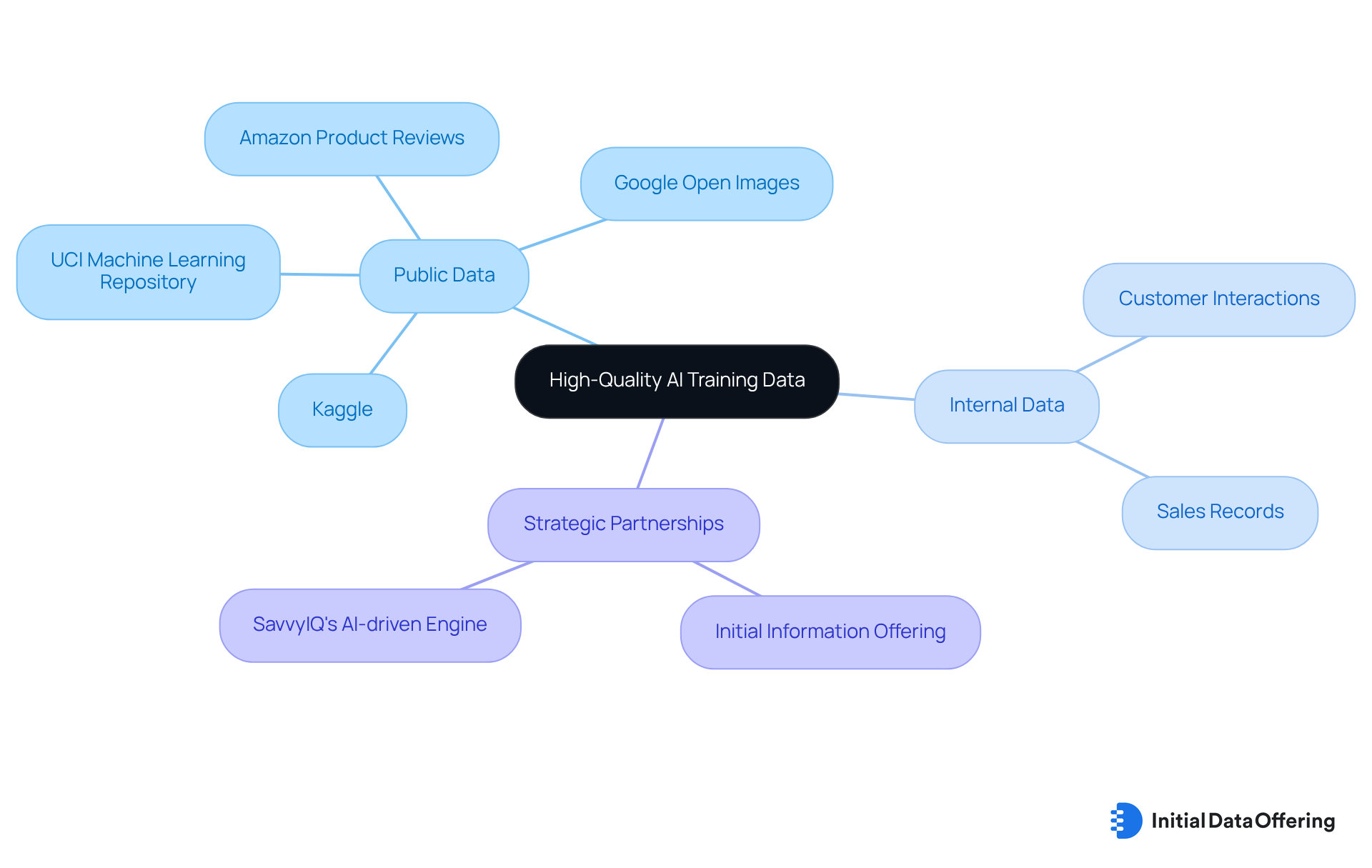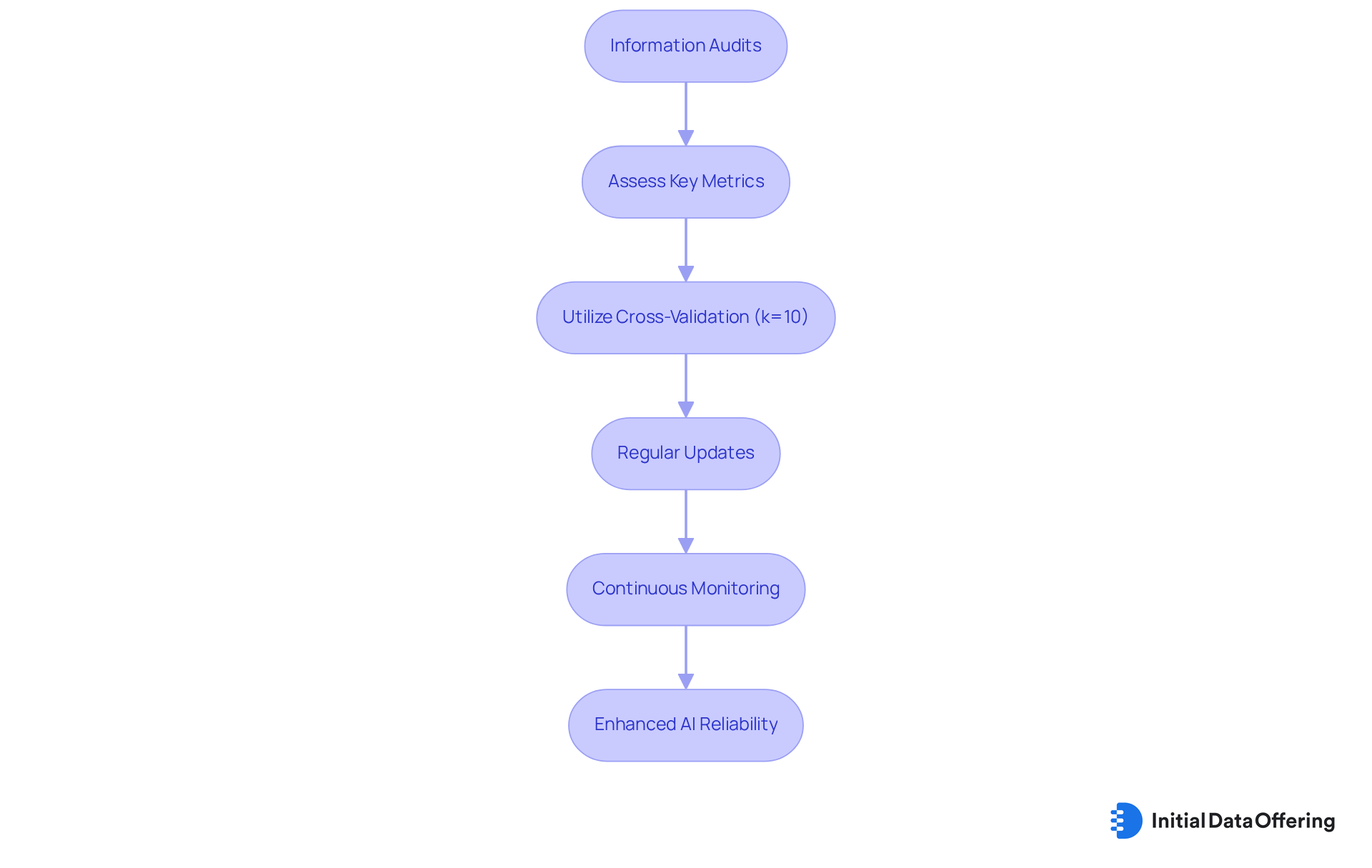4 Key Practices for Sourcing High-Quality AI Training Data

4 Key Practices for Sourcing High-Quality AI Training Data
Overview
The article presents four essential practices for sourcing high-quality AI training data:
- Utilizing public datasets
- Leveraging internal resources
- Ensuring diversity and representation
- Implementing systematic evaluation methods
These practices are pivotal for organizations aiming to develop robust AI models. By employing high-quality training data, organizations not only enhance model performance but also foster trust among users, ultimately leading to reliable insights that effectively address market needs.
How can these practices be integrated into your current data sourcing strategies to improve outcomes? Implementing these strategies will ensure that AI models are well-equipped to meet the diverse demands of the market.
Introduction
The landscape of artificial intelligence is rapidly evolving, with high-quality training data emerging as a critical component for success. As organizations increasingly rely on AI to drive insights and strategies, understanding the best practices for sourcing this data becomes paramount.
How can businesses ensure that the datasets they utilize not only meet their needs but also reflect the diversity and complexity of the market? This article delves into four essential practices for sourcing high-quality AI training data. These practices offer insights that can enhance AI capabilities and drive more accurate outcomes in market research.
Understand the Role of AI Training Data in Market Research
AI training data serves as the cornerstone for machine learning systems, especially in market analysis. This foundational data enables models to discern patterns and predict consumer behavior and market trends effectively. High-quality instructional information ensures that AI systems can accurately analyze complex datasets by utilizing AI training data, yielding more reliable insights.
For example, a well-structured dataset can facilitate the identification of emerging market trends, empowering businesses to adjust their strategies accordingly. The market for AI training data is projected to grow at a CAGR of 22.3% from 2023 to 2028, underscoring the increasing significance of high-quality instructional information in market research.
As Peter Aschmoneit, CEO and Co-Founder of quantilope, notes, AI is transforming survey design and information analysis, which highlights the necessity for robust preparation sets. Understanding the nuances of AI training data is essential for market analysts seeking to leverage AI effectively in their evaluations and recommendations. With 62% of respondents currently utilizing AI, the reliance on high-quality educational resources is more critical than ever.

Source High-Quality AI Training Data
To obtain high-quality AI training data, organizations should consider multiple avenues. Public data collections, such as those available on platforms like Kaggle or the UCI Machine Learning Repository, provide a solid foundation for AI initiatives. These datasets offer a wealth of information, enabling organizations to effectively utilize AI training data to train their models. Additionally, businesses can leverage internal information, such as customer interactions and sales records, to create customized datasets tailored to their specific needs. This approach not only enhances the relevance of the data but also allows for greater control over the training process.
Working together with information providers, such as Initial Information Offering, can significantly improve the quality and variety of the training information. Employing SavvyIQ's AI-driven Recursive Information Engine, organizations can access a dynamic graph of 265 million global entities. This resource enables real-time decisions and automated workflows, ensuring that the information sourced is both reliable and pertinent to specific AI applications. It raises an important question: how can organizations ensure that the datasets they use align with their strategic goals?
It's essential to assess the origin of the information, ensuring it meets the specific needs of the organization. By evaluating the quality and relevance of the datasets, companies can make informed decisions that enhance their AI capabilities. In conclusion, the combination of public data, internal resources, and strategic partnerships can create a robust framework for AI training, ultimately leading to improved outcomes and a competitive edge in the market.

Ensure Diversity and Representation in Training Data
Ensuring diversity and representation in AI training data is essential for creating models that accurately reflect the target population. By obtaining information from various demographic groups and geographic locations, organizations can significantly enhance their datasets. Methods such as information augmentation improve the variety of current datasets. For instance, techniques like flipping, rotating, or modifying images can generate new samples, particularly beneficial when a collection primarily showcases one demographic. By incorporating information from underrepresented groups, organizations can create a more balanced AI training data set.
This approach not only enhances model performance—enabling AI systems to recognize patterns and make accurate predictions across various scenarios—but also fosters trust among users by demonstrating a commitment to inclusivity. As Dakota Murphey notes, "While a difficult challenge, increasing diversity is essential for AI to provide fair and beneficial outcomes for everyone." However, organizations must navigate common pitfalls in ensuring diversity, such as high costs and legal restrictions.
Joint efforts with varied teams can assist in recognizing gaps and ensuring that AI solutions are more equitable and effective. Ultimately, this benefits all communities, promoting an inclusive environment where diverse perspectives contribute to innovative solutions. How can your organization leverage these insights to enhance diversity in AI training resources?

Evaluate and Validate AI Training Data Effectively
To effectively assess and verify AI instructional information, organizations must adopt a systematic method that includes thorough information audits. These audits serve as a critical feature for evaluating the completeness, accuracy, and relevance of datasets, ensuring that the training materials are of high quality. Key metrics such as precision, recall, and F1-score provide essential advantages in assessing the quality of labeled information, offering valuable insights into performance.
Furthermore, utilizing cross-validation methods, particularly with a suggested value of k = 10, is vital for ensuring that systems generalize effectively to unfamiliar examples, thereby minimizing the risk of overfitting.
Regular updates and validations against real-world scenarios are crucial for maintaining the relevance and accuracy of instructional data over time. Continuous monitoring and testing of AI models can help identify and rectify hallucinations, further enhancing the reliability of AI outputs.
By establishing a robust evaluation framework, organizations can significantly improve the integrity of their AI training data. This ultimately leads to more effective and trustworthy AI solutions, which can profoundly impact their operational success.
How can your organization implement these strategies to enhance AI reliability?

Conclusion
High-quality AI training data is pivotal in shaping effective machine learning systems, particularly in the realm of market research. This article emphasizes the necessity of sourcing diverse and representative datasets, which are essential features for ensuring that AI models can accurately interpret consumer behavior and market trends. By understanding the critical role of training data, organizations can leverage it to enhance their decision-making processes and gain a competitive advantage.
The discussion outlines four key practices for sourcing high-quality AI training data:
- Utilizing public data collections
- Harnessing internal resources
- Ensuring diversity and representation
- Implementing systematic evaluation methods
Each of these practices contributes to building a robust framework that not only improves model performance but also fosters trust and inclusivity in AI solutions. The insights provided highlight the importance of strategic partnerships and continuous validation to maintain the relevance and accuracy of training data over time.
In a landscape where AI's influence continues to grow, organizations are urged to prioritize the sourcing and evaluation of their training data. By adopting these best practices, businesses can enhance the effectiveness of their AI models while also contributing to a more equitable and innovative future. Embracing these strategies is essential for any organization aiming to thrive in an increasingly data-driven world.
Frequently Asked Questions
What is the role of AI training data in market research?
AI training data serves as the cornerstone for machine learning systems in market analysis, enabling models to discern patterns and predict consumer behavior and market trends effectively.
Why is high-quality AI training data important?
High-quality instructional information ensures that AI systems can accurately analyze complex datasets, yielding more reliable insights and facilitating the identification of emerging market trends.
What is the projected growth of the AI training data market?
The market for AI training data is projected to grow at a CAGR of 22.3% from 2023 to 2028, highlighting the increasing significance of high-quality instructional information in market research.
How is AI impacting survey design and information analysis?
AI is transforming survey design and information analysis, emphasizing the necessity for robust preparation sets, as noted by Peter Aschmoneit, CEO and Co-Founder of quantilope.
What percentage of respondents are currently utilizing AI in their evaluations?
62% of respondents are currently utilizing AI, indicating a growing reliance on high-quality educational resources in market research.